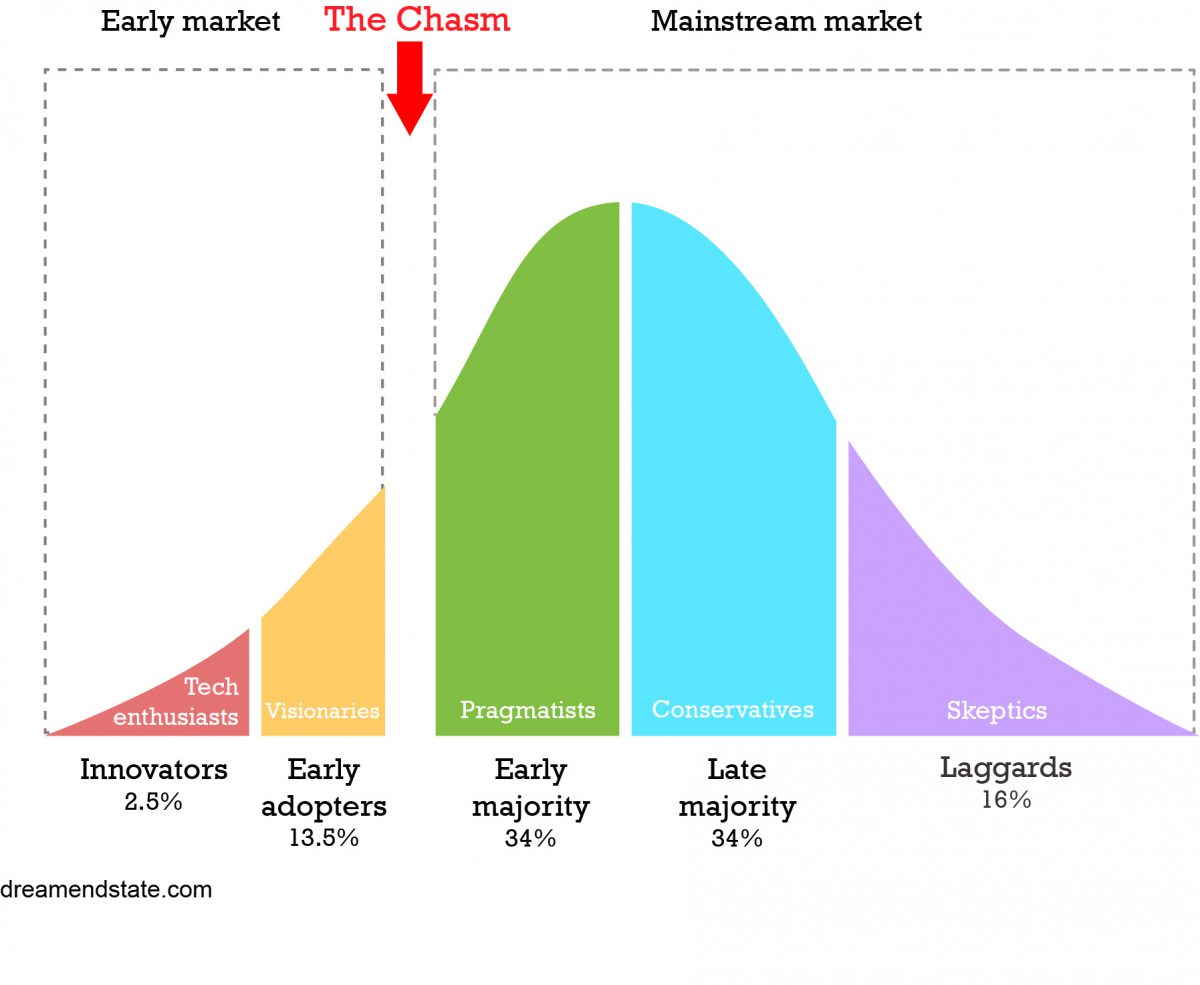This model illustrates what’s required to take new, disruptive technology into the mainstream.
Geoffrey Moore built on Everett Rogers’ diffusion of innovations theory to set out the marketing challenge a company faces when attempting to launch a new high tech product into the mainstream.
The essence of the theory is that innovations are absorbed in stages by different groups split into the early market and the mainstream market. According to Moore, the marketer should focus on one group at a time. The chasm is this separation between the early market and the mainstream.
In the early market, first are the Tech enthusiasts who want to get their hands an the latest, hottest new thing, even if they have to put up with faults. Next come the Visionaries who are interested in major technological advances to secure themselves a competitive advantage.
Next comes the far larger mainstream market, starting with the Pragmatists who make up about one third of the entire market will start to adopt a new product once the technology has proven itself. This cohort is looking for only incremental improvements and are key to obtaining market dominance. The Conservatives are next. This group is as large as the Pragmatists. They take time to win around and want easy-to-use products. Lastly, the Skeptics are a small group, often overlooked, highly resistant to new tech.
Key to success with the mainstream is to deliver a whole product – a product that is not only without flaws but also supported by complimentary services such as well-designed customer service channels, good returns policies and guarantees etc that make the core product a compelling proposition. If a successful firm can traverse the chasm, it can create enough momentum to establish the product as the accepted standard in its market (eg the iPhone in the premium smartphone martket).
Watch out for
Moore’s theories only apply to disruptive innovations. Arguably the best model to explain incremental innovations is the standard bell curve (without the chasm) of Rogers’ original technology adoption lifecycle model.
Not all products and services are intended to cross into the mainstream. This is particularly true of digital services and new media channles that consciously target very niche markets, the so-called long tail. The internet has reduced the costs of distribution to almost zero, which means the minimum viable audience is now much smaller for companies and entrepreneurs to achieve an acceptable return.
Resources
Levitt, T., (1986).The Marketing Imagination. The Free Press
Moore, G., (2014). Crossing the Chasm, 3rd Edition: Marketing and Selling Disruptive Products to Mainstream Customers. Collins Business Essentials
Rogers, E. M. (2003). Diffusion of innovations (5th ed.). The Free Press

